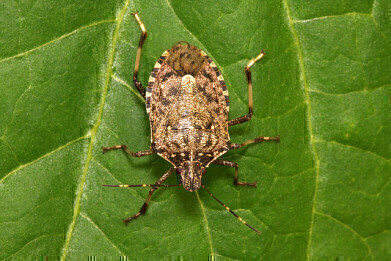GC-MS
Are You Drinking Stinkbug Wine?
Feb 01 2016
The introduction of non-native plants and animals can have a devastating effect on the ecosystems and indigenous species in the places where they are introduced. Whether the species is released by design or accident — they can multiply and spread quickly as they often have no natural predators to help keep them in check.
One species of bug that has raised its head in the US and is forecast to reach UK shores from the continent soon is the stink bug. What does this critter do and why are wine growers fearful of its impact?
Halyomorpha halys
The brown marmorated stink bug (BMSB) is native to China, Japan, Taiwan and Korea where it is an agricultural pest damaging soybean and fruit crops. In Asia, stink bugs have natural enemies such as a parasitoid wasp. Stink bugs were first found in the US in the 1990s in Pennsylvania, spreading to a further 40 states over the next 20 years. They have also been found in France, Germany, Italy and Switzerland — hence the prediction that they will soon reach the UK.
BMSB have been found to live on tree fruits, vegetables, field crops and other vegetation in both its natural and non-natural areas. And in the US, they have caused serious crop damage to apples, sweetcorn, maize and grapes. Stink bugs are also considered a major nuisance to households — due to its habit of overwintering in human built structures including houses — in one house over 20,000 stink bugs were found to be over wintering.
But it is the stink bugs defence mechanism that can affect wine — it can emit a foul odour from holes in its abdomen to deter predators.
Trans-2-decenal
The odour released by stink bugs is said to resemble coriander or waxy oranges, with the main chemical behind the smell is thought to be trans-2-decenal, an aldehyde. Various studies have been carried out to try and determine the impact of BMSBs odour on wine and if there is any way to remove the taint once it is there.
One research project has followed infected grapes throughout the wine making process — taking samples at various stages to monitor how many stinkbugs were needed to produce wine that would be unacceptable for consumers. The samples were analysed at each stage using gas chromatography - mass spectrometry, a widely used technique discussed in this article, An Introduction into the Role of Gas Chromatography - Mass Spectrometry (GC-MS) in Metabolomic Analysis.
No definitive answers as to how many stinkbugs and if the taint can be removed have been reported yet. But as the global travel increases and it gets easier to import new foods and ideas — the threat of invasive species is only likely to increase unless stricter controls are introduced along with the means to enforce them. In today’s climate of austerity — this is unlikely to be a popular area for governments to spend taxes on.
Does your wine spell of coriander?
Image via Wikimedia Commons
Digital Edition
Chromatography Today - Buyers' Guide 2022
October 2023
In This Edition Modern & Practical Applications - Accelerating ADC Development with Mass Spectrometry - Implementing High-Resolution Ion Mobility into Peptide Mapping Workflows Chromatogr...
View all digital editions
Events
Apr 23 2024 Kintex, South Korea
Apr 23 2024 Seoul, South Korea
Apr 28 2024 Montreal, Quebec, Canada
May 05 2024 Seville, Spain
May 15 2024 Birmingham, UK














